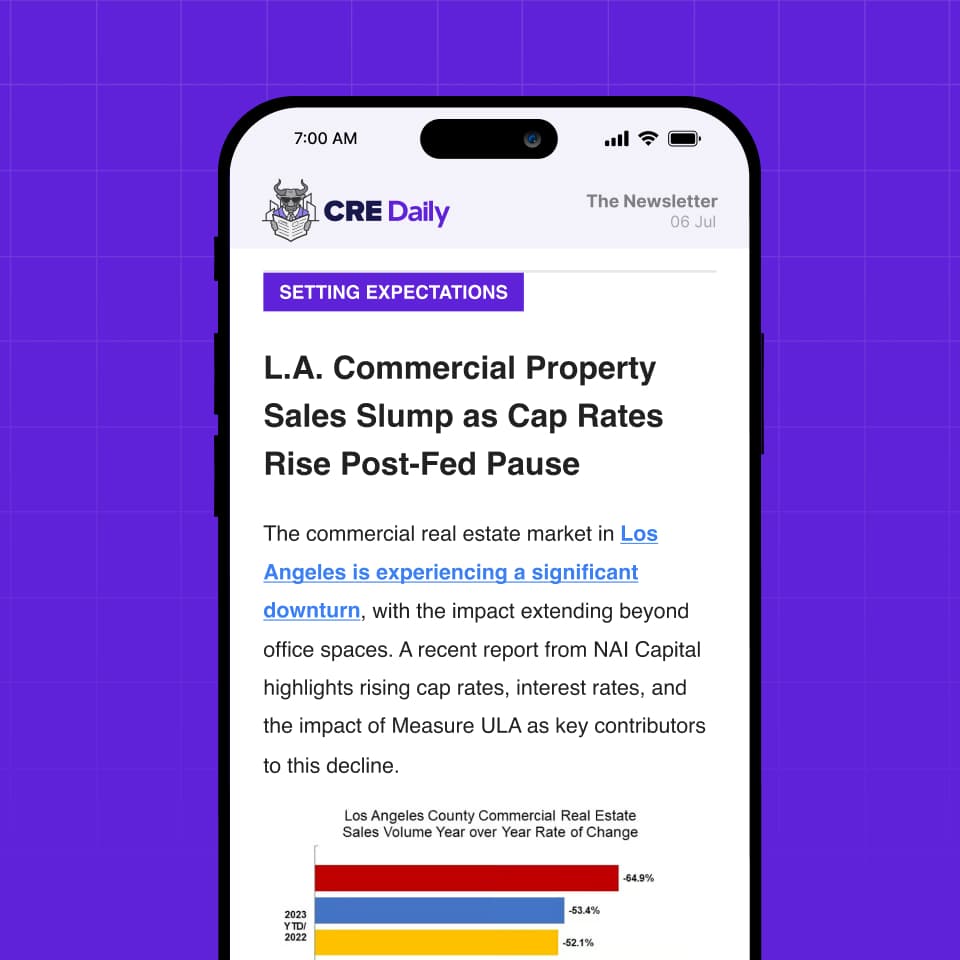- Lenders are tightening loan terms in New York City’s multifamily market, requiring more personal guarantees and tougher recourse provisions.
- Manhattan multifamily values have dropped significantly since 2019, and rent-regulated apartments are straining landlords due to the Housing Stability and Tenant Protection Act.
- While some borrowers have simply handed back the keys to underwater properties, new recourse terms make this option more difficult to execute.
- The broader market reset is still expected to take several years, and true distress will emerge only after values bottom out.
As multifamily distress continues to spread across New York City, lenders are re-evaluating their approach to loan terms, demanding stricter provisions, including personal guarantees, in response to borrowers defaulting on underwater properties.
At the Bisnow New York Multifamily Development and Investment Conference, industry insiders noted that more recourse debt is being introduced into newly originated loans. The move is meant to prevent landlords from simply walking away from distressed properties.
Recourse Debt on The Rise
Recourse provisions allow lenders to seize additional assets beyond the distressed property if a borrower defaults, thus making it harder for property owners to just hand over the keys without consequences.
“We structure our deals around that, whether it’s a personal guarantee or a corporate guarantee, just so the borrower has skin in the game,” said Chris Mitchell, Senior Banking Officer at Northern Trust Bank.
This shift comes in response to rising instances of borrowers abandoning properties, leaving lenders with significant losses.
In particular, major office landlords, such as Charles Cohen, are embroiled in legal battles over personal guarantees tied to loans taken years ago. As property values plummet, creditors are targeting assets like luxury vacation homes and even superyachts to recover losses.
Piling On The Distress
In Manhattan, multifamily property values have dropped sharply—from $940 PSF in 2019 to $679 PSF in 2024, according to Ariel Property Advisors. During the same period, cap rates ballooned from 4% to 6.2%, signaling a tough market for property owners.
The Housing Stability and Tenant Protection Act of 2019, which limits landlords’ ability to raise rents on rent-regulated apartments, compounds this issue.
With nearly 1M rent-stabilized apartments in New York City, the law made it more difficult for landlords to keep up with rising operating costs and mortgage payments, particularly for older, rent-stabilized buildings.
Get Smarter about what matters in CRE
Stay ahead of trends in commercial real estate with CRE Daily – the free newsletter delivering everything you need to start your day in just 5-minutes
Handing Back The Keys
While many borrowers have opted to “hand back the keys” to lenders, this has significant tax implications, especially for those utilizing the 1031 exchange tax strategy.
Foreclosure on a 1031 property could result in debt forgiveness, which the IRS may consider taxable income. Borrowers could face steep capital gains taxes if debts are forgiven or if the property is sold at a loss.
Despite these consequences, some distressed multifamily owners still choose to walk away. Dansker Capital Group CEO Andrew Dansker highlighted the 1031 exchange issue presents an added complication, especially when properties are disposed of at a loss. “If you give back the keys and you dispose of that asset, you’ve got a real problem,” he said.
Marketwide Lending Changes
The tightening of loan terms reflects the broader challenges facing multifamily lending in New York. A few years ago, borrowers could choose from various lenders competing for their business, often securing favorable rates.
Today, the lending environment is much more constrained, with terms much less favorable to borrowers. Loan rates have spiked, and many lenders require higher compensating balances and more stringent guarantees to protect against further market volatility.
“Five years ago, you needed to borrow money, and you had a half-dozen people fighting for your business,” Dansker noted. “Today, you’ve got one person offering you a loan at 6.75%, and they want a 10% compensating balance.”
Longer Road to Stability
As the market works through these challenges, some experts believe it will take another 2–4 years before values hit their bottom and the true extent of distress is revealed.
Asland Capital Partners Managing Partner James Simmons commented, “No one wants to do it voluntarily. It’s going to be forced. Those banks that have these assets on their books will have to get rid of them, recognize the losses, and borrowers will either hand in the keys or face consequences.”
Until then, multifamily investors must adjust to the evolving lending landscape, where tougher terms and more personal risk are becoming the norm.
















